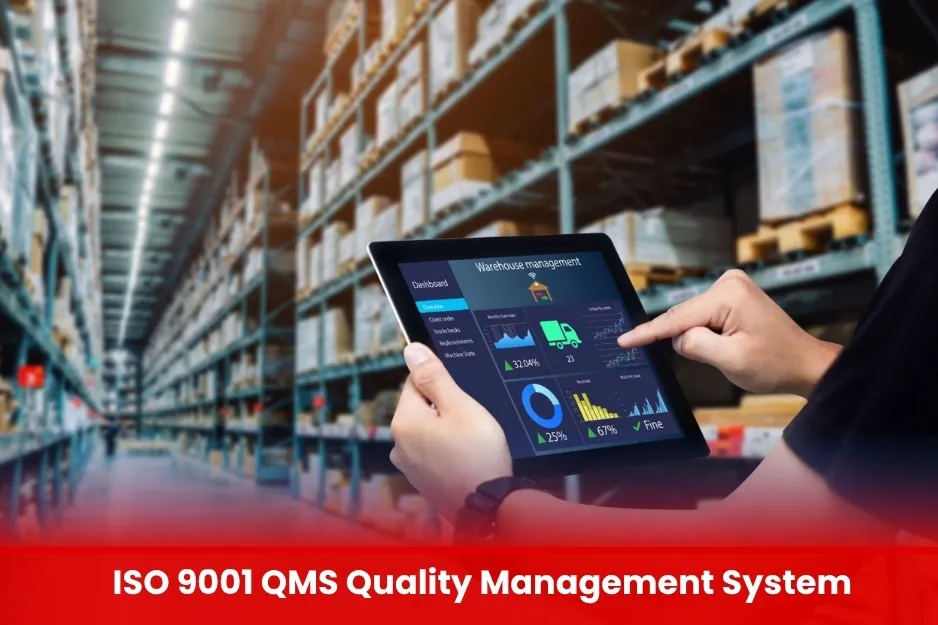ISO 9001 QMS Quality Management System
ISO 9001 is an internationally recognized standard that sets out the criteria for a Quality Management System (QMS). It provides organizations with a systematic approach to managing processes and ensuring that products and services consistently meet customer and regulatory requirements.
The main focus of ISO 9001 is to enhance customer satisfaction through effective quality management, continuous improvement, and by ensuring that organizations deliver high-quality products and services.

Aim of Surveying Software Application
The primary aim of ISO 9001 is to help organizations:
- Establish and maintain a systematic approach to quality management
- Consistently deliver products and services that meet customer and regulatory requirements
- Enhance customer satisfaction through continual improvement of processes
- Promote efficiency and effectiveness within the organization
- Support risk-based thinking to identify and manage potential challenges proactively
Course Overview
ISO 9001 QMS Quality Management System
To be eligible for ISO 9001 certification, an organization must:
- Implement a Quality Management System (QMS):
- The system must follow ISO 9001:2015 standard requirements.
- Processes should be clearly defined, documented, and controlled.
- Define the Scope of the QMS:
- Clearly state what areas of the organization the certification will cover.
- Establish Quality Objectives:
- Set measurable quality goals aligned with customer and business needs.
- Ensure Leadership Commitment:
- Top management must be actively involved and support the QMS.
- Train and Involve Staff:
- Employees must be competent, aware of quality policies, and involved in continuous improvement.
- Monitor and Evaluate Performance:
- Conduct internal audits, management reviews, and customer feedback evaluations.
- Address Risks and Opportunities:
- Apply risk-based thinking throughout all processes.
- Prepare for External Audit:
- Undergo a certification audit by an accredited certification body.
| Course Code | Curriculum Title | Credit | DLH |
|---|---|---|---|
| BUK1936-1 | Scope | 3 | 20 |
| BUK1936-2 | Normative References | 3 | 20 |
| BUK1936-3 | Terms and Definitions | 3 | 20 |
| BUK1936-4 | Context of the Organization | 3 | 20 |
| BUK1936-5 | Planning | 3 | 20 |
| BUK1936-6 | Performance Evaluation | 3 | 20 |
Learning Objectives
- Scope
Defines the purpose and applicability of the standard.
- Normative References
Lists other documents referenced in the standard.
- Terms and Definitions
Provides key definitions used in ISO 9001.
- Context of the Organization
- Understand internal and external factors affecting the organization
- Identify stakeholders and their needs
- Define the scope of the QMS
- Establish the processes of the QMS
- Leadership
- Top management commitment to quality
- Establish quality policy
- Assign organizational roles and responsibilities
- Planning
- Identify risks and opportunities
- Set quality objectives
- Plan changes to the QMS as needed
- Support
- Provide necessary resources (people, infrastructure, environment)
- Ensure competence and training
- Promote awareness and communication
- Control documented information
- Operation
- Plan and control operational processes
- Manage customer requirements
- Design and develop products/services
- Control external providers
- Deliver and release products/services
- Manage nonconforming outputs
- Performance Evaluation
- Monitor, measure, analyze, and evaluate QMS performance
- Conduct internal audits
- Perform management reviews
- Improvement
- Address nonconformities and take corrective actions
- Drive continual improvement of the QMS
- Manufacturing companies (products, components, machinery)
- Service providers (IT, finance, healthcare, education, hospitality)
- Retailers and wholesalers
- Construction and engineering firms
- Logistics and transportation companies
- Public sector organizations (government departments, agencies)
- Non-profits and NGOs
- Startups and small businesses
- Large enterprises and multinational corporations
- All Modules within this qualification are assessed internally by the approved training Centre and externally verified by BURRAQ UK. The program uses a criterion-referenced assessment approach to ensure that learners successfully meet all required learning outcomes.
- A Pass in any unit is granted only when the learner submits valid, reliable, and authentic evidence that demonstrates achievement of the assessment criteria. The Assessor is responsible for reviewing this evidence and confirming that the learner has attained the expected standard.
